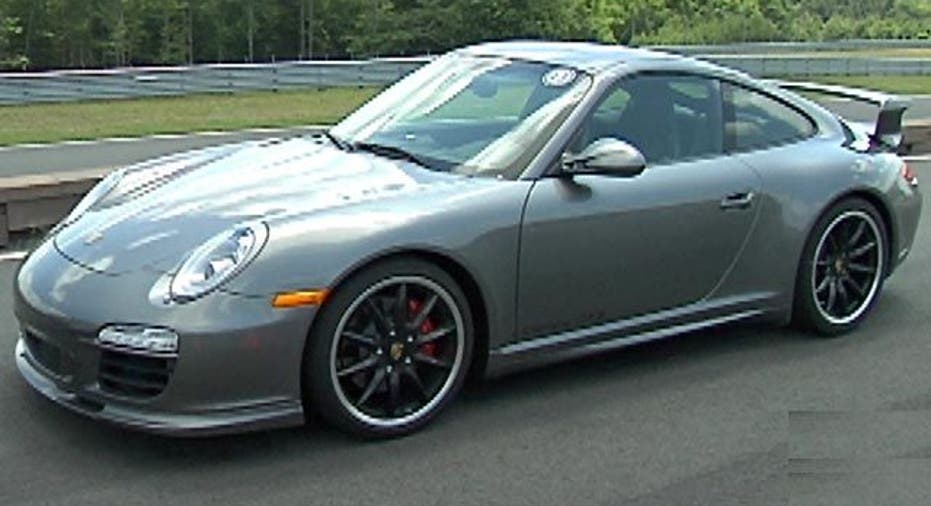Why Your Porsche is a Sitting Duck

Your Porsche has just been totaled in an accident. Luckily, you're not injured and the accident wasn't your fault.
But if someone with cheap or no insurance hits you, you're in for a whole new set of headaches.
With one in seven drivers in the United States uninsured, according to the Insurance Research Council, and millions more buying only the minimum liability insurance required by state law, the chances of having your expensive car hit by someone who can't afford to have it fixed are higher than you'd think.
Those minimum requirements for property damage coverage -- as low as $5,000 in California and Pennsylvania, but $10,000 to $25,000 in most states -- won't come near paying for a totaled Porsche, or even a modestly equipped BMW.
What happens when the 1% and the 99% meet on the freeway?
You're covered -- or so you think
Someone driving with no insurance or minimal coverage isn't likely to have the cash in the bank to make up the difference to cover your losses. (See "What if you hit a Bentley?") You might guess from its name that this is where uninsured motorist and underinsured motorist coverage would step in. And you would be right, but only partly.
Uninsured motorist property damage coverage isn't available in all states, and in many places where it is available the coverage won't pay the entire value of your car. Instead, it pays for repairs up to a certain amount -- in California, for example, the limit is $3,500. (Just for perspective, the rear bumper cover -- the plastic skin -- on a Porsche 911 GT2 lists for $4,729.27.)
The better option -- and the more likely one if you're driving a $100,000 car -- is collision coverage, says Penny Gusner, a CarInsurance.com consumer analyst.
Collision coverage repairs your car even in accidents in which you're at fault. And in accidents where you're blameless, collision insurance ensures your car is fixed or replaced, whether the other guy has insurance coverage or not. It becomes your insurance company's problem to go after the driver at fault.
You probably have collision coverage already, yet you are still not out of the woods.
Don't go cheap now
The yearly premium on a 2012 Porsche 911 Carrera S driven in California averages more than $4,000 for a driver with an unblemished record, according to data gathered by Quadrant Information Services. You might reasonably try to cut that bill by raising the deductible on your collision coverage. Depending on your state and insurer, you can go as high as $2,500.
But you have to pay that deductible even if you're not at fault. Gusner notes that in some states, uninsured motorist property damage coverage will cover your deductible, if you happen to buy both collision and uninsured motorist coverage.
You're also exceptionally vulnerable to depreciation, which occurs on a far grander scale than it does with mere Volkswagens. Gap insurance is cheaper if you buy it through your insurance company rather than your bank or sales dealership.
Can you withstand two weeks in a Chevrolet Aveo? Most policies will pay about $30 a day for rental car reimbursement, and not for long.
Recognizing the potential hardship, specialty exotic-car insurers offer more lavish rentals. ACE Private Risk Services pays up to $10,000 with no per-day limit. Wells Fargo Insurance Services pays up to $12,000 for as long as the car is in the repair shop.
Lastly, if you scraped up the cash for a Porsche but somehow do not have health insurance, medical payments (also called MedPay) coverage is a good idea, Gusner says. It's unlikely you'd fall within any hospital's poverty guidelines, and if you are ever injured in a car accident with an uninsured driver, there truly is no magic clause elsewhere in your insurance that will pay your medical bills.
You're a target, too
You may call a scrape in traffic a fender-bender, but others may see an encounter with your high-dollar car as an opportunity.
"They are targets, and someone smashes into them to see if they can make a claim," says Scott Coleman, who provides auto insurance for celebrities and other wealthy clients at Wells Fargo Insurance Services.
Wealthy car owners can protect their assets if their auto insurance is supplemented with an umbrella policy, Gusner says. But umbrella policies can be obtained only if you already have high auto insurance limits, such as $250,000 per person and $500,000 per accident in bodily injury liability coverage, and $500,000 in property damage, she says.
Courts can go after a wealthy driver's assets. So, for someone with a net worth of $10 million, paying $200 annually for a $1 million umbrella policy -- or better yet, $2,500 for $10 million in coverage -- is worth the cost, Spencer says.
The original article can be found at CarInsurance.com:Why your Porsche is a sitting duck



















